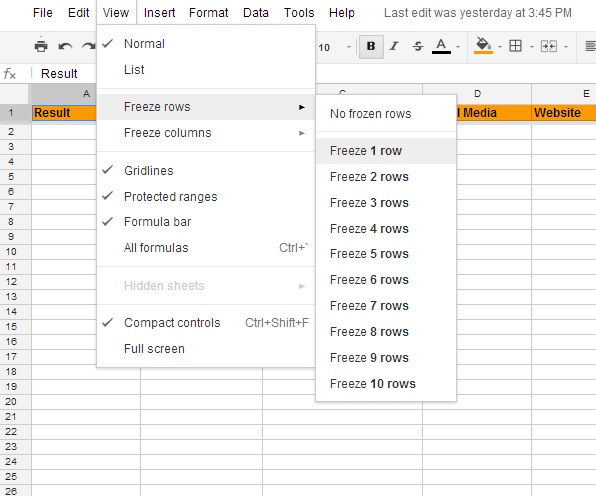A 3-step outreach strategy for (new) SEO content creators
 Publishing content is thrilling, exciting, and a little nerve wracking. There’s a sense of accomplishment, satisfaction, and even perhaps, vulnerability.
Publishing content is thrilling, exciting, and a little nerve wracking. There’s a sense of accomplishment, satisfaction, and even perhaps, vulnerability.
Creating content can be a very revealing process – we share our thoughts, opinions, abilities and general self. At its core it’s a very unfiltered process. But content creation is no time to be shy – the goal of creating anything is ultimately to share that creation with the world.
That’s why outreach is so extremely vital to content creation, and ultimately intertwined with publication. Because if it’s worth the effort of publishing, it’s certainly worth sharing – which can be unfortunately under-emphasized when creative individuals first start creating great content.
Whether it’s a fear of asking, a certain shyness, or the belief that good content will naturally be shared, there’s a multitude of reasons creators don’t outreach to others after publication.
But I implore you – if you’re creating content, you should be spending a healthy amount of time outreaching that same content, asking for feedback, a social share, or even a link.
There are ways to outreach tactfully and respectfully, which can help you garner important industry relationships and contacts. So, to help propel you down the path of content advocate, here’s an outreach checklist after content publication.
1) Defining an Audience – Who Should You Contact?
Outreach is the antithesis of shyness. It’s better to create a large list and whittle it down, if need be, than to create but a handful of contacts.
Before you can even begin to start an outreach campaign based around soon to publish or recently published content, you need to define who your audience is, who will be interested in your content, and who will merely be receptive.
Although who you reach out to is always influenced by your content, as a general rule of thumb you should be contacting:
- Anyone involved or participating in the content (such as an interview, for example)
- Anyone mentioned, associated with, or affected by the content
- Anyone who’s previously participated, created, or associated with similar content in the past
- Influencers within the industry
- Prior relationships within your industry (the earlier the better – think feedback)
- Anyone you wish to build a relationship with.
Creating a list based upon these factors should give you a doozy of a list for potential outreach – especially if it’s content worth sharing.
From here, it’s time to be realistic. Outreach should always be finely targeted initially to a core group of those most likely to be receptive. Targeted outreach to kick off an outreach campaign is an extremely underrated leveraging tool.
The goal is to land the most likely big name prospects to start with. If you can name drop a few influencers, experts, or general big industry names within the rest of your outreach you’ve guaranteed yourself a higher response rate.
Beyond even that, those initial successes can create a sharing circle that may well hit potential outreach targets before you do – thereby giving your outreach further credence.
If and when you’ve received a positive response from your targeted list it’s time to move on to less likely targets – those who probably aren’t as interested in your content, but might be influenced to care by industry names conveniently included in your outreach.
The priority should look something like:
influencers/experts likely to respond>prior relationships>those involved or participating>similar content associations>influencers/experts not likely to respond>anyone mentioned, associated, or affected>potential relationships.
The concept is to build as much authority as possible as you move down the list. This increases the odds that those you contact, as they become less relevant or likely to care, won’t be annoyed at the general intrudance, but in fact be grateful for being included in your outreach process since other important people were also included and responded.
Social proof should never be underestimated.
2) Creating an organized outreach list
Although ideally done before or during the content creation, if you haven’t yet formed a list of outreach contacts you’ll absolutely want to assemble one prior to starting the actual outreach, after you’ve defined your audience.
There’s a variety of tools that can help form and manage an outreach list, including:
Google documents is completely free, with Excel being free if already installed (or you have MS Office). Buzzstream and Raven both scale based upon pricing plans.
Personally, I’ve found that unless the project is fairly large I can get by with Google docs just fine. It’s simple, shareable, and easy to use and manipulate. Pretty much everything I need from an ordered list of outreach contacts. Google docs is a great place for beginners to start.
Organization of the list can boil down to personal preference – do you want a thorough list with a multitude of layers of information, or a minimalistic list to keep it easy to read and quick to navigate?
Here’s what a typical outreach list looks like when I’m building a Google doc outreach form:
I started with the result, to ensure maximum visibility and scanability. After that comes the name of the contact, their email, social media, website, our relationship, and three attempts at outreach – the third switching to social media.
This should keep the list well organized as you move through your outreach, but minimalistic enough to ensure ease of use.
Note as well that I froze the first row, so that as I scrolled down through the contacts I was able to keep the identifying information on top (and bolded).
Here’s a screenshot showing how to do so:
The result, name of contact, email, social media and relationship should all be pretty self explanatory.
Those unfamiliar with outreach might wonder why three outreach attempts. Three is important because:
- Any more and you run the risk of becoming annoying and/or flagged as spam
- The first should be personalized, explain the point of the email succinctly, and have a call to action.
- The second outreach attempt should be a simple follow up, two or three sentences max, attached to the first email, with another short call to action – ie “Emailed you on (date) and wanted to check in that you saw it. Are you interested?”
- The third outreach attempt will be a switch to social media – again a short notification and call to action.
If you’re only going to attempt a single outreach, you’re better off not wasting your time outreaching – your response rate is bound to be dismal. People are inundated with email and information overload anymore. Your goal should be to contact them in a useful, brief, informative manner without causing further annoyance.
Three is few enough to typically fall short of annoying, while maximizing the chance of them reading, engaging, and responding.
The switch to social media on the third attempt will also help with email fatigue, while offering forward the social proof of your identity (assuming your social media presence is established).
3) The Outreach Process
This has been covered brilliantly a few times, most recently by Stephany Beadell of SEER and Richard Marriott of Clambr, both of which I strongly recommend you read.
To boil down their – along with quite a few other outreach expert’s – advice, here’s what you should know:
- Be short and to the point, focusing on your message, it’s value, and always ending with a singular call to action.
- Be human – templates are fine, but your goal for every outreach should be to be as human as possible.
- Make it easy to respond to – yes or no if possible – and quick to reply.
- Make sure you’re outreaching to the right people, in a targeted order.
- Don’t thank someone just for reading your email – although you can and should thank them when and if they do reply, share, or link.
- Follow up as appropriate – I use a personalized first email, an extremely short follow up email two to three days after the first, and then a final switch to social media if I still haven’t received a response.
- Don’t get dejected – the online world is fast paced, busy, and noisy. You’ll never have 100% of people respond to your outreach, which means someone important will always slip through the cracks.
Remember, we don’t live on an island. The internet is a fun, crazy, crowded place. You’ll never be noticed if you don’t make some noise yourself. So the next time you’ve created some content worth sharing, and are set to publish, don’t skimp on the outreach campaign. Because without a little elbow grease to get feedback, social shares, and even links, you’ll never get off the ground, nor build any lasting, beneficial relationships.
The internet is no place to be shy.
Recap
After (or before, if possible) publication, you should prepare to outreach by:
1. Define your audience – who’s interested in your content?
a. Anyone involved or participating in the content
b. Anyone mentioned, associated with, or affected by the content
c. Anyone who’s previously participated, created, or associated with similar content in the past
d. Influencers within the industry
e. Prior relationships within your industry
f. Anyone you wish to build a relationship with
2. Create a usable, organized outreach list
a. There are a variety of tools, but beginners might want to start with Google docs
3. The outreach process
a. Be short and to the point, with a singular call to action
b. Be human and respectful
c. Begin with a targeted audience, who you can later cite as social proof
d. Follow up as appropriate, and quick to respond
e. Don’t get dejected – you’ll never get a 100% response rate
About the Author ~ Jon Ball
Jon Ball is VP of Business Development for Page One Power. Jon specializes in the implementation of highly effective link building strategies for clients across the globe. In his previous life he was a professional portrait photographer, and still passionately pursues photography. Page One Power is a link building firm that focuses on relevancy and transparency.
Save 25% on the SEO Copywriting Certification training through September 30th! Use coupon code SEPTEMBER



Thanks for the post! It’s very informative and pretty simplified for a confusing subject.
Glad you enjoyed the post Ashley! Hope it’s useful for future publications.